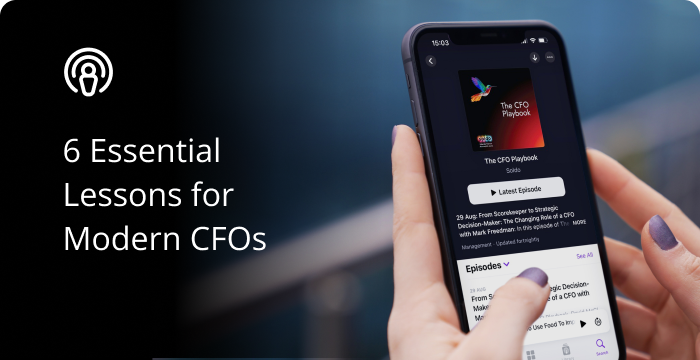Are you doing a spend analysis at least once a quarter? Have you ever done a spend analysis before?
Not to worry if you haven’t – it’s never too late to build a new healthy habit into your company spending strategy. And, as the cost of living crisis continues to put pressure on your pocket, a good company spending strategy has never been more important.
Doing a regular spend analysis is essential for making sure the rules you set out in your expense policy on paper, are actually being followed in practice. Some people find spend analysis easier than others – their eyes seem to find patterns in spreadsheets, and meaning in piles of crumpled receipts. Others find the range of numbers disorienting and stressful, which is why the task is so often neglected.
The good news is that there are three simple steps you can follow to find meaning – and savings – in your list of business of outgoings:
Spend analysis step 1: see it
The first step of your spend analysis is all about visibility. If you can’t see it, you can’t analyse it. At this stage you’ll want to focus on unearthing everything you possibly can about the money your business is spending.
If you haven’t done this before, it can be quite overwhelming. Fortunately, your second spend analysis is almost never as gruelling as your first.
Round up the data
If you want to analyse your spend you have to know where to find the data.
Depending on how your business is structured, you may need to source information from a few different teams, so make sure you leave yourself enough time to do that during this first step.
For smaller businesses, rounding up the data might just mean opening a box of receipts in your desk drawer, or doing a search for invoices in your email inbox. Be thorough and always double check that you haven’t missed anything.
If you’re using Soldo, this step won’t take long at all. Just log in to the admin dashboard and download reports for the period you’re analysing.
Assess the round up process
Before moving on to the next step, take some time to reflect on how easy (or difficult) it was to round up the data. If it was difficult, this is a great opportunity to tweak your expense process so step one of your spend analysis runs smoothly next time.
If it was easy, don’t rest on your laurels – you should still look for other ways to make the process even better.
Spend analysis step 2: sort it
Now that you’ve sourced your data, you’ll need to sort it in a way that makes sense. That way your spend anaylsis won’t leave you feeling dizzy. The goal at this stage is to be systematic, so that like can be compared against like.
Say yes to tech
This is where technology comes in to your spend analysis (if you haven’t been using it already).
Excel is still the most widely used tool for expenses but spreadsheets can get messy pretty quickly and mistakes can slip in unnoticed. There are some great alternatives out there to help you manage and analyse company spend, including accounting software such as Sage, Quickbooks and Xero.
Although you might not consider yourself tech savvy, don’t underestimate how much you’re already doing on a normal day with your smartphone. From checking work emails or messages on the go to using your business banking app and maybe even tracking your morning run.
A spend management platform like Soldo brings these two kinds of technology together. You and your employees can use our mobile app to snap a picture of a receipt right at the point of purchase so you always know who spent what. And because our platform integrates with your accounting software, you’re never left with hours of month-end reconciliation or time wasted on tracking down missing receipts.
Sort purchases into spend categories
The best way to be systematic about your spend data is to organise it by category.
Your business will have specific categories depending on where you and your team need to spend money but here are some of the most common ones:
- Travel
- Food
- Accommodation
- Software
- Office supplies
- Marketing
- IT
- Telephony/internet
It’s really important to get the categorisation step of your spend analysis right. It’s even more important that you make categorisation a central part of your company spending strategy – if you haven’t already done so.
If you’re a Soldo user, you can create your own categories in the admin dashboard, and add the relevant category to every purchase – it only takes a couple of seconds. If you’re using accounting software such as Xero, you can add categories when you upload your expenses, or review and accept the software’s automatic suggestions.
Spend analysis step 3: study it
Ironically, analysis is the final step of the spend analysis process. Making your expenses visible, and then sorting them into categories, often takes longer than studying them for patterns and opportunities to save your business money. But if you’ve done the seeing and sorting steps properly, the studying step should be relatively straightforward.
Search for patterns
Start with one category, such as travel, then try to zoom out and look at your company spend with fresh eyes. You’re looking for patterns and trends in your company spending that you might not have noticed otherwise.
Finding patterns is not an end in itself. Instead, patterns are a means to spotting opportunities to cut costs or shift budget from one spend category to another. Patterns often highlight old habits that your business has taken for granted as ‘just the way things are.’ Challenge this. Why are you spending in this way? How could you do things differently?
Patterns can also show an over-reliance on a small range of suppliers. Challenge this, too – especially now as you’re faced with weathering an economic storm having just traded through a global pandemic.
Your suppliers may have had no choice but to increase their prices but, if you’re a loyal customer, could you negotiate a bulk discount? Is there a way you could organise your buying over the year to make better use of existing bulk discounts? Are you over-reliant on one supplier for a crucial regular item? What would happen if they folded or were unable to fulfil an order? Would it be safer to explore your options?
Study the outliers
The other reason to seek out patterns in your company spending is so that you can easily identify outliers.
- Are there any expenses that stand out? Why do they stand out?
- Has your business paid twice for something in error? Or have you overpaid?
- Has your company spend unexpectedly increased in certain categories?
- Should you adjust your budget to align with new needs, or adjust your spending to realign with your budget?
- Are all of your employees or teams adhering equally to your expense policy? What can you do to ensure that everyone is sticking to the rules?
Studying the outliers is not about being picky for the sake of it. It’s about checking that everything makes sense – that every expense can be tied to a relevant business need.
The bottom line
Once you’ve analysed your company spend, it’s worth dedicating some serious thought to the time it took you to make sense of all the outgoings. If you manage your company’s spend well, seeing it and sorting it will be condensed into just a few clicks. And, once everything is in order, studying it should be fast, accurate and stress-free.
Find out how Soldo can make your next spend analysis a breeze or subscribe for more articles like this one.










